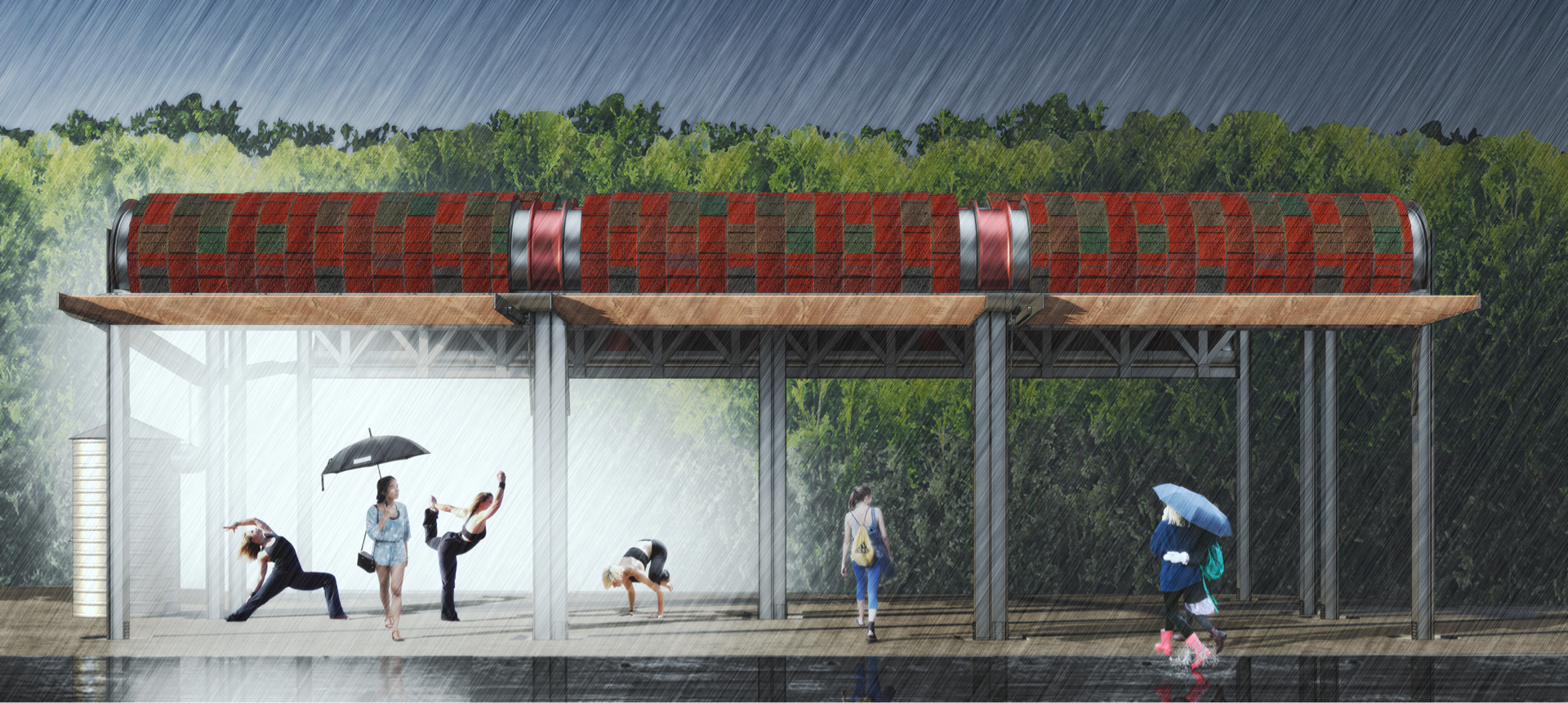Agora
Purpose: Pavilion
Total Building Square Footage: 1134 sq ft
Location: Harringay Warehouse District, London, UK
Year: 2020
Role:
Designer and Author
Company:
Self-Employed

Top Dance Performance at the Pavilion
Complementing The Context
With piano companies like Challen formerly operating in the district, it seemed fitting to design a pavilion that acknowledged the once prevalent piano industry [i]. The curvature of the pavilion’s roof is inspired by piano harps and the plywood formwork is reminiscent of piano hammers. The outer terracotta-red and sea green tile-work on the roof alludes to the brick facades of nearby residential buildings. Additionally, the exposed steel supports allude to the industrial buildings in the immediate vicinity.
As cities grow, gentrification frequently occurs. Development can devour an area’s identity and historic buildings, replacing them with obtrusive, glitzy structures. Pavilions themselves are sometimes the aforementioned spectacle and could be classified as a symbol of gentrification. This design does not seek to be showy. Instead, it seeks restraint and keeps the site largely untouched.

A close-up on the presentation board's section cut, elevations, and configuration diagrams.

Top Exploded Axonometric Drawing
Proposal
Ancient Greek agoras inspired this design concept. With its sheltered and walkable space, the pavilion’s conducive design is ideal (1) for nearby artists who want to share their work and teach the public, and (2) for public gathering and socializing.
Flexibility and scalability influenced this pavilion design. With an open floor plan, widely spaced load-bearing steel columns and trusses, and a 4.6-metre high ceiling, the space accomplishes this feat. The undulating, timbrel vault roof is inspired by the work of both Hundertwasser and Gaudi, who crossed architecture with art. Working with a steel structure bolted to sunken concrete pads, volunteers would install plywood formwork, with two layers of interconnected roof tiles [ii]. A gutter system directs rainwater away from the edges of the roof into a rain barrel. Hinged awnings allow for spatial expansion in the Southeast, providing additional shading and protection from the weather.
This minimally invasive pavilion design concept is conscientious of the historical surroundings and is sensitive to the needs of the local artist community. With visual call-outs to the area’s piano industry, the pavilion amplifies the narrative of the Harringay Warehouse District and preserves its heritage. This pavilion design would attract local and international visitors alike and enhance the area’s robust character. All the while, the design would avoid being a catalyst for gentrification.
i. Doran, John. "Boom Boom Pow: Black Midi Interviewed." The Quietus. Last modified May 20, 2019. Accessed February 24, 2020. https://thequietus.com/articles/26505-black-midi-interview.
ii. De Decker, Kris. "Tiles as a substitute for steel: the art of the timbrel vault." Edited by Shameez Joubert and Vincent Grosjean. Low-Tech Magazine. Accessed March 6, 2020. https://www.lowtechmagazine.com/2008/11/tiles-vaults.html.

Top Yoga Practitioners Sheltered by the Pavilion
Maxwell Zaleski © 2021–2025